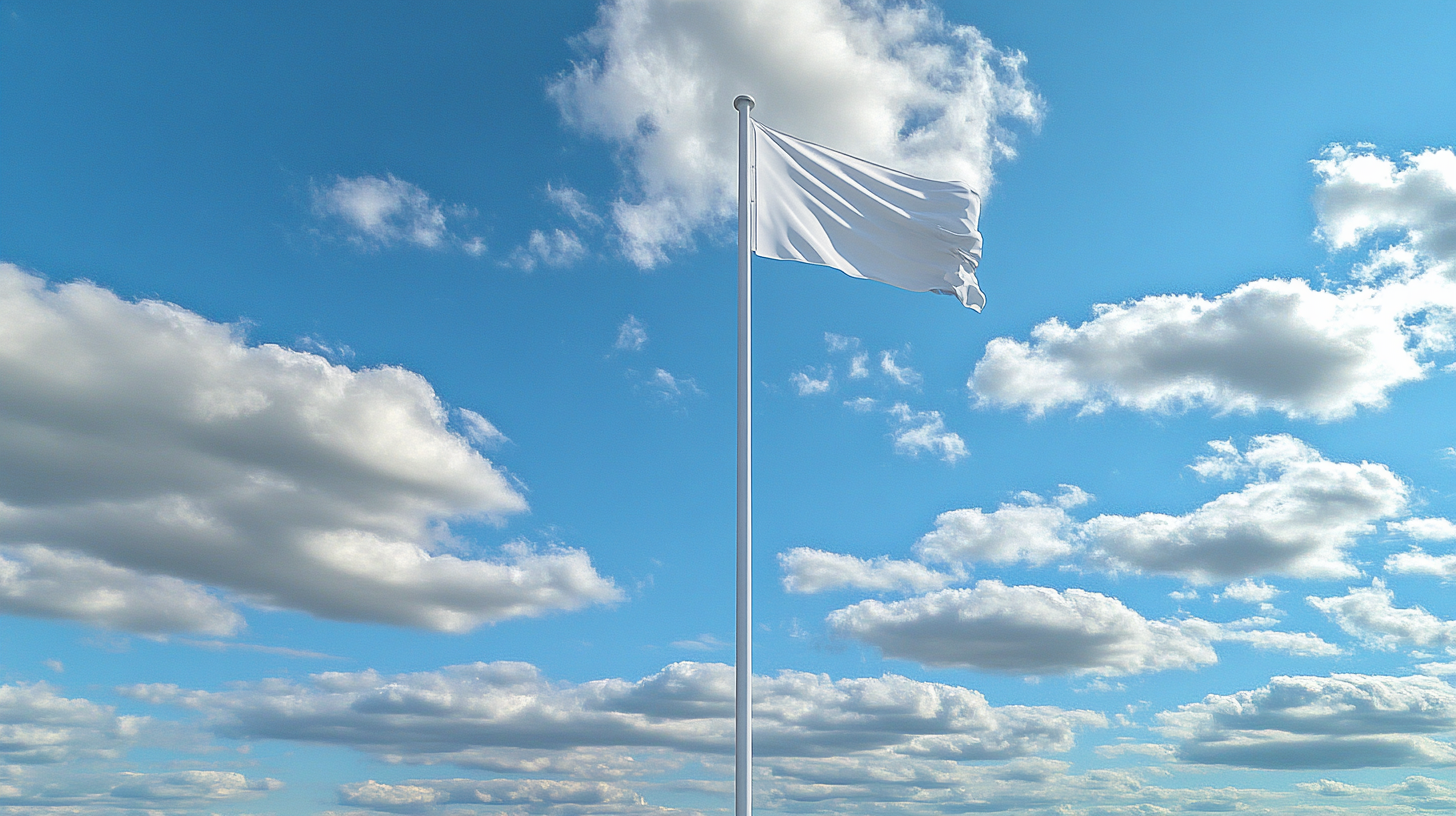How to Choose the Perfect Telescoping Flagpole for Your Needs
When it comes to displaying your national pride or creating a striking outdoor aesthetic, choosing the right Telescoping Flagpole is crucial. According to the American Flag Foundation, the display of flags has been a significant aspect of American culture, with over 36% of households proudly flying flags during national holidays. However, the increasing variety of flags and flagpoles available on the market can make finding the ideal Telescoping Flagpole a daunting task. A reliable Telescoping Flagpole not only enhances the visual appeal of your property but also ensures durability and ease of use, making it a practical choice for both residential and commercial applications.
Recent studies indicate that the flagpole market is experiencing steady growth, with a projected CAGR of 6.3% from 2021 to 2027, driven by rising demand for outdoor decor and recreational activities (Market Research Future). As more individuals and businesses seek the visibility and distinction that comes with a Telescoping Flagpole, understanding the key factors involved in making a selection becomes essential. Factors such as height, material, and ease of setup and takedown must be considered to ensure that your flagpole meets not only aesthetic preferences but also practical needs. In this blog, we will explore how to navigate these considerations and ultimately choose the perfect Telescoping Flagpole for your unique requirements.

Factors to Consider When Selecting a Telescoping Flagpole for Your Location
When selecting a telescoping flagpole, several key factors must be considered to ensure you choose one that suits your location and usage needs. First and foremost, the flagpole's height is crucial. According to industry standards, a flagpole should generally be at least one and a half times the height of the surrounding buildings or structures to ensure visibility and prevent obstruction. This not only enhances aesthetic appeal but also ensures your flag can be appreciated from a distance, especially in areas where flag displays have recently sparked debate, such as on college campuses. Another vital consideration is the material of the flagpole. Telescoping flagpoles are typically made from aluminum or fiberglass, each offering unique advantages. Aluminum poles are lightweight and resistant to rust, making them suitable for various weather conditions. In contrast, fiberglass options can offer better durability against UV rays and are often favored in areas with harsh climates. Selecting the right material will depend on both your local weather patterns and how frequently you plan to erect and dismantle the flagpole. It's also essential to consider the mechanism of the flagpole. Manual vs. automatic mechanisms can greatly affect ease of use. Many modern telescoping flagpoles come with user-friendly designs that allow for quick setup and take down, making them accessible even for those who may not be physically strong. Given recent discussions around the significance of flag displays in public spaces, ensuring your flagpole can be easily managed encourages active participation in showcasing your pride and values. Finally, always bear in mind the flagpole's foundation. A secure base not only stabilizes the flagpole but also ensures it withstands foul weather, which is vital for maintaining your flag’s upright position. In places where substantial wind or storms are a concern, consider using ground sleeves or concrete to reinforce the structure, ensuring that your flag can fly proudly regardless of external conditions.

Material Choices: Aluminum vs. Fiberglass for Durability and Stability
When selecting a telescoping flagpole, material composition plays a crucial role in determining its durability and stability. The two most common materials used are aluminum and fiberglass, each with distinct characteristics that influence performance in various environments. According to a report by the National Association of Manufacturers, both materials exhibit impressive resistance to corrosion, but they do so in different ways. Aluminum, being less dense than fiberglass, offers a lightweight solution that's easier to handle during setup and takedown.
Aluminum flagpoles generally boast a tensile strength estimated at around 40,000 psi, making them incredibly robust in wind speeds up to 50 mph. This makes them suitable for residential use where high winds may be a concern. However, fiberglass flagpoles have unique benefits as well. They are known for their superior flexibility and resilience, which allows them to bend without breaking in gusty conditions, and they do not conduct electricity, making them a safer option near power lines. A study conducted by the American Wind Energy Association shows that fiberglass can withstand sustained wind speeds of up to 70 mph, making it a preferred choice in storm-prone regions.
Additionally, the choice between aluminum and fiberglass may also hinge on environmental considerations. Aluminum poles are often treated with anodization to enhance durability, but they can degrade over time if not properly maintained. Conversely, fiberglass poles are generally impervious to the elements, providing long-lasting performance with minimal upkeep. In summary, selecting the right material for your needs involves assessing factors like wind conditions, safety, and maintenance requirements, ensuring that your flagpole stands tall and proud no matter the weather.

Height Options: Finding the Right Size for Your Flag Display
When selecting a telescoping flagpole, the height of the pole plays a crucial role in ensuring your flag is displayed prominently. Flagpoles come in various heights, typically ranging from 15 to 25 feet. The ideal height for your flag display depends on several factors, including the size of the flag, the surrounding environment, and the visibility you desire. A taller pole will elevate your flag above obstructions such as trees and buildings, providing a more commanding presence, especially in open areas.
Moreover, consider the size of the flag you plan to use. A general guideline suggests that for every foot of pole height, the flag should measure one foot in length. For example, a 20-foot flagpole is best paired with a flag that is approximately 3x5 feet. This sizing ensures that the flag is proportional to the pole and is easily seen from a distance. If you intend to display a larger flag, you may wish to opt for a taller pole to maintain the visual balance.
Lastly, evaluating the landscape around your property can guide your decision on height. If your property is situated in a low-lying area surrounded by taller structures, a higher flagpole will ensure that your flag stands out. Conversely, if you're located in an area where the surroundings are relatively uniform in height, a mid-range pole may suffice. Ultimately, assessing your specific needs and context will lead you to the perfect height for your telescoping flagpole, enhancing your flag display's aesthetics and visibility.

Ease of Installation: Essential Features for a Hassle-Free Setup
When it comes to selecting the right telescoping flagpole, the installation process plays a crucial role in ensuring a hassle-free setup. Many consumers often overlook essential features that can simplify this experience. One key feature to look for is an easy assembly mechanism. Take the time to evaluate how the pole segments connect and whether they come with clear instructions to streamline the building process.
Another important aspect to consider is the durability of the materials used in construction. A flagpole made from lightweight yet sturdy materials will not only be easier to handle during installation but will also ensure long-term stability. Additionally, look for poles with a simple tilting mechanism. This allows you to lower the flagpole to the ground easily for maintenance or during severe weather conditions, making installation and care much more user-friendly.
Moreover, ensure that the flagpole includes necessary accessories, such as ground sleeves and clips for hanging the flag. These components not only contribute to an efficient setup but also enhance the overall functionality of the flagpole. By focusing on these features, you can choose a telescoping flagpole that meets your needs while providing a smooth installation experience.
Budgeting: How to Find the Best Value for Your Flagpole Investment
When selecting a telescoping flagpole, budgeting is a critical factor that significantly influences your investment. Industry reports indicate that flagpoles can range widely in price, from as low as $50 for basic models to over $400 for high-end, durable options. Understanding your budget can help narrow down choices without compromising on quality. According to a recent survey by the Flagpole Association, 60% of consumers reported that they experienced buyer's remorse when they spent too little, often resulting in frequent replacements and additional costs over time.
To find the best value for your flagpole investment, it’s essential to consider not just the initial purchase price but also long-term maintenance costs. Many high-quality telescoping flagpoles are constructed from weather-resistant materials such as aluminum, which can reduce long-term maintenance expenses. A study by Outdoor Flagpoles Inc. states that investing in a durable flagpole can save up to 30% in replacement costs over a decade compared to cheaper alternatives.
Another key aspect is the warranty offered by the manufacturer. A robust warranty can be an indicator of a product’s longevity and quality. According to research from National Flagpole Systems, flagpoles with a warranty of 10 years or more tend to perform better and result in higher customer satisfaction. Thus, when budgeting for your telescoping flagpole, allocating funds not only for the initial purchase but also for potential accessories and warranties can ensure that you achieve the best value in the long term.

